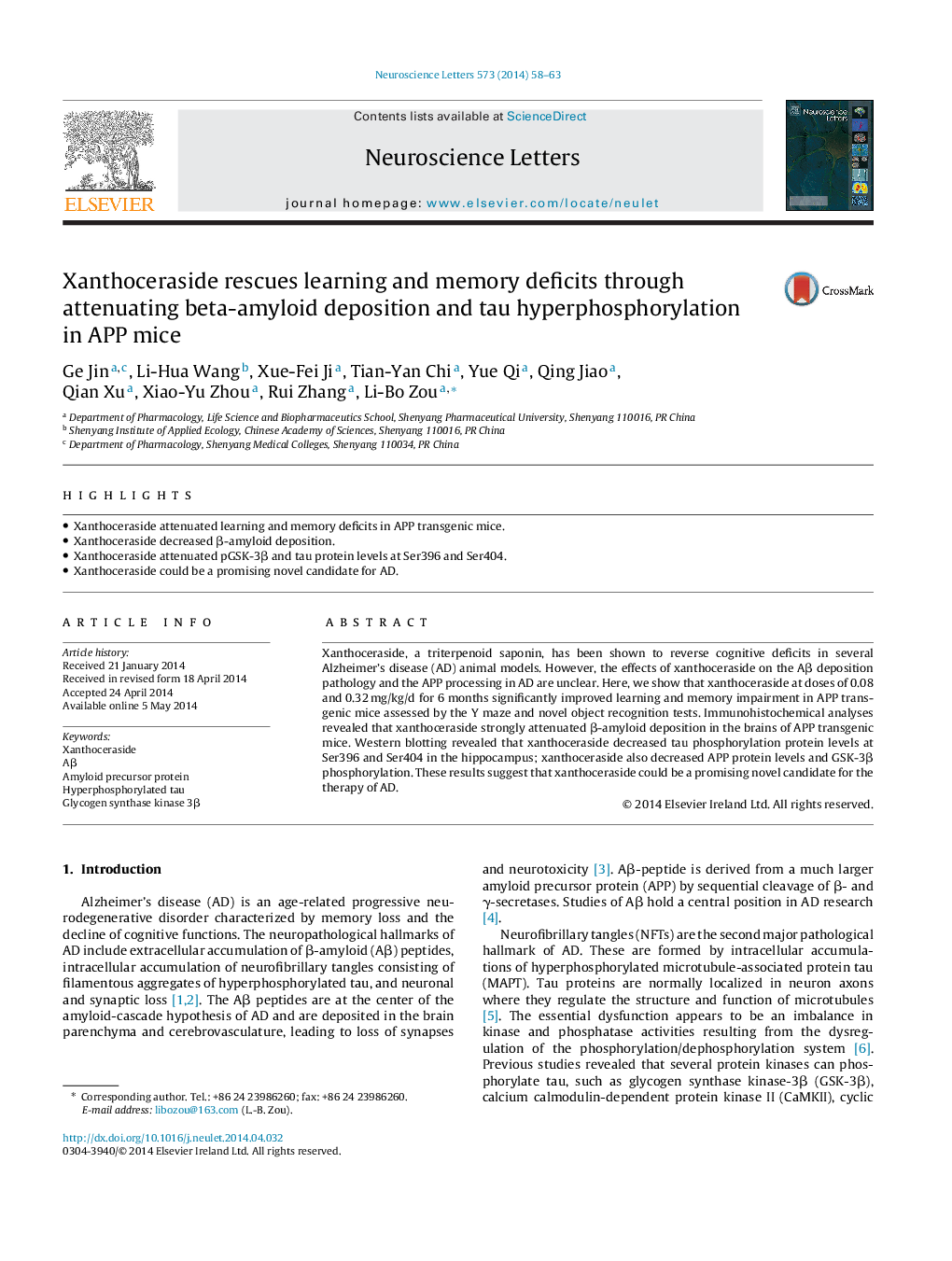| Article ID | Journal | Published Year | Pages | File Type |
|---|---|---|---|---|
| 6281983 | Neuroscience Letters | 2014 | 6 Pages |
â¢Xanthoceraside attenuated learning and memory deficits in APP transgenic mice.â¢Xanthoceraside decreased β-amyloid deposition.â¢Xanthoceraside attenuated pGSK-3β and tau protein levels at Ser396 and Ser404.â¢Xanthoceraside could be a promising novel candidate for AD.
Xanthoceraside, a triterpenoid saponin, has been shown to reverse cognitive deficits in several Alzheimer's disease (AD) animal models. However, the effects of xanthoceraside on the Aβ deposition pathology and the APP processing in AD are unclear. Here, we show that xanthoceraside at doses of 0.08 and 0.32 mg/kg/d for 6 months significantly improved learning and memory impairment in APP transgenic mice assessed by the Y maze and novel object recognition tests. Immunohistochemical analyses revealed that xanthoceraside strongly attenuated β-amyloid deposition in the brains of APP transgenic mice. Western blotting revealed that xanthoceraside decreased tau phosphorylation protein levels at Ser396 and Ser404 in the hippocampus; xanthoceraside also decreased APP protein levels and GSK-3β phosphorylation. These results suggest that xanthoceraside could be a promising novel candidate for the therapy of AD.
